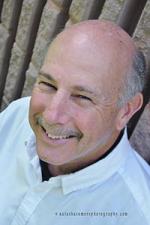Featured Image Courtesy Thomas Hawk
Architectural Styles: Googie
Speaker

Architect and historian Alan Hess is the architecture critic of the San Jose Mercury News and a contributor to the Architect’s Newspaper. He has written nineteen books on Modern architecture and urbanism in the mid-twentieth century. His latest book, Frank Lloyd Wright: Natural Design, Organic Architecture was published in October 2012.
He has written monographs on architects Oscar Niemeyer, Frank Lloyd Wright, and John Lautner, as well as architectural histories of Las Vegas and Palm Springs. Hess’ other books include Googie: Ultramodern Roadside Architecture, Forgotten Modern, and The Ranch House. He is currently researching the architecture of Irvine, California, one of the United States’ largest master-planned communities of the 1960s and 1970s.
Hess was a National Arts Journalism Program Fellow at Columbia University's School of Journalism, and received a grant from the Graham Foundation for Advanced Studies in the Fine Arts to research the work of Brazilian landscape architect Roberto Burle Marx. He has a M.Arch degree from the Graduate School of Architecture and Urban Planning, UCLA.
His work has received the 2014 Award of Excellence from Docomomo-US for “Curating the City: Modern Architecture in L.A.” Website (with the Los Angeles Conservancy), the 1997 Honor Award from the National Trust for Historic Preservation, and the President’s Award from the California Preservation Foundation.
Hess has been active in the preservation of post-World War II architecture, qualifying several significant buildings for the National Register of Historic Places, including the oldest McDonald’s drive-in restaurant (1953, Downey, CA), Edward Durell Stone’s Stuart Pharmaceutical factory (1958, Pasadena, CA), Wurdeman and Becket’s Bullock’s Pasadena (1947, Pasadena, CA), and Edward Varney’s Valley Ho Motor (1957, Scottsdale, AZ.)
